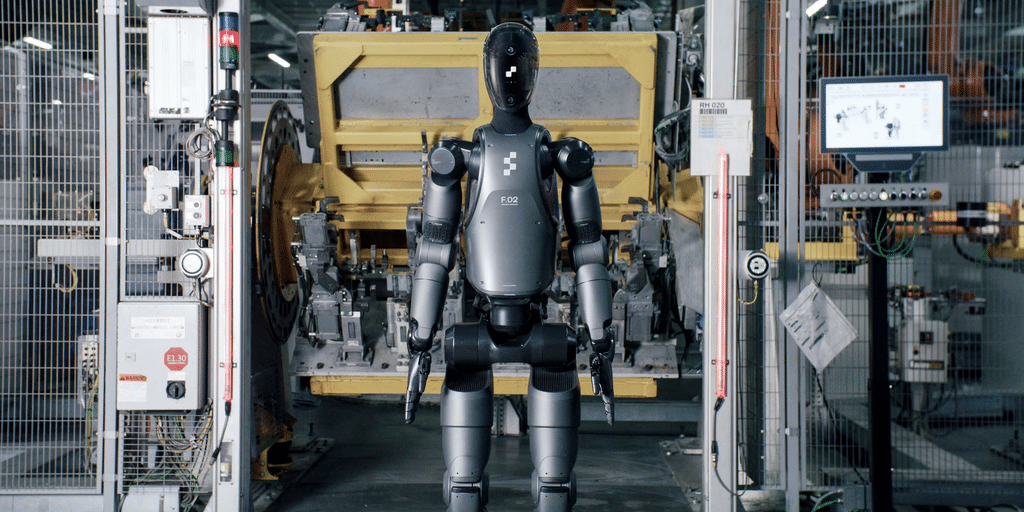In the rapidly advancing world of robotics and artificial intelligence (AI), the unveiling of Figure AI’s Figure 02 humanoid robot marks a significant milestone. This latest model, following the company’s initial Figure 01, boasts an array of technological enhancements that set a new standard in the field of robotics. Among these are improved AI systems, a leap forward in computer vision capabilities, and a redesigned power unit, all of which contribute to its superiority over competitors. This evolution signals a shift towards more sophisticated, efficient, and capable robotic units that could redefine industrial applications and beyond.
Technological Advancements of Figure 02
The introduction of the Figure 02 robot comes with noteworthy upgrades, most notably in its AI and vision systems. Equipped with six AI-powered RGB cameras, the robot achieves a heightened level of computer vision, allowing it to interpret and interact with its surroundings more accurately than ever before. Additionally, the revamped battery pack ensures longer operation times, enhancing its efficiency and making it a more viable option for various tasks.
Another area where the Figure 02 shines is in its physical design, particularly its hands. The new model features hands with 16 degrees of freedom, surpassing those of its contemporaries and closing the gap with the human hand (which boasts 27 degrees of freedom). This development is pivotal, as it enables the robot to perform a wider range of tasks with greater precision.
Partnership with OpenAI and Industry Implications
Figure AI’s collaboration with OpenAI brings advanced language and visual processing skills to its robots. This partnership has birthed a robot capable of real-time conversation and complex task execution, further bridged by subsequent improvements in the Figure 02 model. Such capabilities not only highlight the strides in making robots more autonomous and versatile but also indicate the potential for humanoid robots to undertake tasks previously considered exclusive to humans.
The collaboration is underscored by significant financial backing, with Figure AI recently achieving a $2.6 billion valuation following substantial investment from industry giants. This infusion of capital reflects confidence in Figure AI’s trajectory and its potential to disrupt traditional labor markets with its robotic solutions.
Comparative Analysis with Humanoid Robot Industry
While Figure AI focuses on industrial applications for its robotic workforce, competitors like 1X and Tesla explore different niches. 1X, with its NEO robot, aims to penetrate the home assistant market, thereby bringing humanoid robots into domestic settings. On the other hand, Tesla’s Optimus, featuring a plethora of structural actuators and Tesla’s proprietary technologies, demonstrates versatility in task execution reminiscent of human capabilities. These developments across the industry showcase a diverse range of applications for humanoid robots, from personal assistance to complex industrial operations.
The Future of Humanoid Robotics
This technological evolution accompanies both enthusiasm and apprehensions, with some fearing the dystopian scenarios often depicted in science fiction. However, the potential for these advanced robots to assume roles in dangerous or undesirable jobs provides a glimpse into a future where human work is elevated to tasks requiring creativity, empathy, and complex problem-solving. Figure AI’s founder emphasizes this vision, arguing for a future where robotics liberates humans from menial tasks, allowing for enriched lives and broader societal advancements.
The humanoid robotics industry stands at a precipice, with companies like Figure AI leading the charge towards a future where robots and humans coexist and collaborate more seamlessly. As technology continues to advance, the scope of possibility for humanoid robots in various sectors—ranging from industrial to personal assistance—expands, promising profound shifts in how work is understood and undertaken. This era of robotics promises not just advancements in AI and robotics but a reimagining of the human-robot relationship for the better.
In sum, the release of the Figure 02 robot underscores the remarkable progress being made in the field of humanoid robotics. Through technological innovation and strategic partnerships, the barriers between human and machine capabilities continue to blur, ushering in a new era of possibilities that hold the potential to redefine society in myriad beneficial ways.
